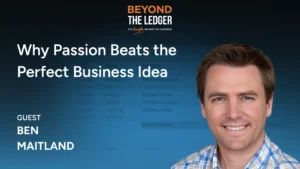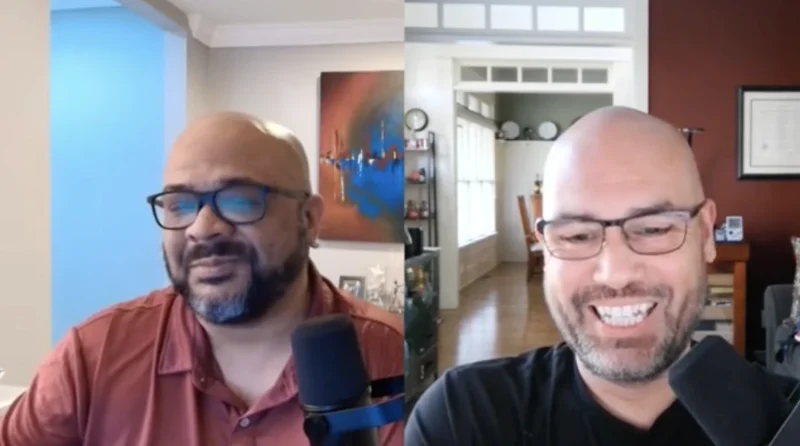As Interest Rates Climb, Businesses Should Think Twice About Slowing Spending
Another day, another interest rate hike. The Federal Reserve announced Wednesday afternoon that it’d be raising the federal funds rate by 0.75%. Previously at 1.58%, this now puts the federal funds rate at a range of 2.25% to 2.5%.
This is now the third interest rate increase in 2022, rising sharply from 0.25% in March to the June range of 1.5% to 1.75%. The Fed is expected to raise rates at least two more times before the end of the year, perhaps as much as another 100 basis points.
For all the pandemic’s catastrophic impacts on the national and global economy, one silver lining was how its economic instability forced the Fed to keep interest rates low. The Fed maintained an attractive borrowing climate with near-zero rates for over three years to stimulate spending, but with the pandemic behind us and inflation persisting at levels unseen since the ’80s, the Fed’s controlled demolition of demand returns in acute form.
The logic behind a rate hike like this is straightforward enough: The economy is too hot right now with too much money in circulation, which encourages firms to raise prices to capitalize on supposed boosts in discretionary income, and in turn reduces the buying power of the dollar. To fix this, the Fed has to disincentivize consumer borrowing and spending, which in theory cools demand enough to encourage prices to come back down. This would hopefully prevent an official recession.
“We actually think we need a period of growth below potential in order to create some slack so that the supply side can catch up. One of the other things we talked about, there will in all likelihood be a softening of labor market conditions and those are things that we expect and we think that they’re probably necessary,” said Jerome Powell, Chair of the Federal Reserve, in a press conference announcing the rate hike.
Higher Interest Rates Will Impact Business Spending
The other side of this demand coin is the one more immediately consequential to our audience; interest rate increases impact both consumer and business demand. David Ruccio, Professor of Economics Emeritus at the University of Notre Dame, believes that while consumers are likely to feel the hurt, it’s businesses that will decrease their spending more than individuals.
“Consumers have to spend. Consumers have to pay for their gas, they have to pay for food, they have to pay for healthcare, they have to pay for education. They don’t have a lot of alternatives. What it means is that for consumers, they’re gonna go increasingly into debt,” Ruccio said. “Businesses are a bit different, right? They’ve got a lot more leeway in terms of what they can do.”
Likely, businesses already see the writing on the wall from dips in consumer confidence. While the National Bureau of Economic Research has yet to make it official, over 70% of consumers believe we’re headed straight for a recession, and another 22% believe we’re already in one. What does a higher interest rate and a still-looming recessionary period mean for companies dealing with their own sets of market pressures, from supply chain costs, to talent gaps, to tight VC funding?
“That makes it difficult to plan, right? It changes the valuation of their capital stock. It changes the valuation of their assets,” Ruccio said.
Pulling from years of analysis and watching businesses react to economic uncertainty, Ruccio said the common strategy among firms for dealing with higher interest rates is a “cautious” one of cutting back on borrowing. This strategy is ringing true today due to a couple of inflationary factors. Employees on the receiving end of this July’s most recent CPI numbers face a 9.1% increase in consumer prices, pushing for wage increases to maintain their standard of living. Suppliers are also placing pressure on firms as they absorb an 11.3% increase in the PPI, largely due to increases in oil prices, by raising prices.
These compounding increases to operating expenses means firms’ major investments will continue to be deprioritized.
“Whatever plan they had for big investments, R&D, automation, new software packages…they put on hold. All those new employees they’d like to hire in order to produce the goods and services that they offer…now that’s put on hold,” Ruccio said. “They’re in a position in which they’re waiting things out.”
What Happens if Businesses Slow Down Spending?
If a company is financing any of its on-going projects or rollouts with debt, the cost of that debt is now going up. In the short-term, businesses may feel forced to temper even existing investments through cost-cutting.
“And they are in turn gonna react by, for example, cutting off contracts to suppliers. They’re gonna react by putting on hiring freezes, or as we’ve already seen this summer by laying off tens of thousands of workers,” Ruccio said.
This is a “perfectly rational” response from each individual business and fulfills the net goal of the Federal Reserve, Ruccio explained, but it comes at a cost. Disruption to the flow of B2B revenue, slowed productive output, and sharply increasing unemployment to 10% a la Larry Summers’ recommendation often creates a positive feedback loop that depresses the economy while attempting to resuscitate it.
“If each individual business does that as a rational response to these conditions, then recession becomes a self-fulfilling prophecy. Then all of them together have cut back and now we’re in a downward spiral,” Ruccio said.
Businesses should be weary of the potential ramifications of cutting back on investments too drastically. While cutting back on hiring and laying off workers may decrease short-term costs, companies may find that the majority of budgetary pressure isn’t necessarily coming from wage growth.
A May 2022 report from the Economic Policy Institute found that while nominal wages have grown at a faster pace in the last year than the past few decades, they’ve still “lagged far behind” inflationary trends, meaning that not only has inflation “unambiguously not been driven by tight labor markets pushing up wages,” but current wage growth may actually be dampening inflation, not causing it.
To add to this, while the pandemic’s massive increase of stimulus and relief dollars placed more money in circulation, that money didn’t overwhelmingly fall in the hands of consumers in the form of discretionary income. About $1.5 trillion was spent on consumer stimulus checks and unemployment benefits, compared to the $1.7 trillion spent on various business protection programs during the pandemic. This excludes the billions more spent on investment projects for public health, education, transit and housing spending. Though consumers may feel the positive effects of these investments, they don’t translate to more money in the bank.
Even just the various PPP loans, which were meant to help businesses continue to pay workers during a financial crunch, ended up passing off a limited amount of dollars to consumers; NBER research from January 2022 found that the “majority of PPP loan dollars issued in 2020—66 to 77 percent—did not go to paychecks, however, but instead accrued to business owners and shareholders.”
This means that if businesses increased their prices since the start of the pandemic to capture increased demand, consumers haven’t necessarily had the income to match. Said price increases, therefore, have ended up acting as self-imposed inflationary pressures even if businesses are seeing higher profit margins.
Can Businesses Try Any Other Strategies?
Businesses may look at the third interest rate hike this year, and hints of two more before the end of the year, and feel shackled by limited possibilities on how to respond to increasing borrowing and investment costs.
“What I worry about as an economist is, has the range of options been so decreased that this is the only possibility, the only possibility is the Summers possibility, is increasing unemployment to 10? What about other things,” Ruccio said.
There’s an argument to be made for a different approach than slowing both business borrowing and spending to make it through this consistently-higher interest rate and inflationary period.
Cutting back on investments is a short-term solution that “might work,” Ruccio explained, but losing skilled workers, ending relationships with trusted suppliers, and pausing innovative developments could invariably leave firms out to dry when a recovery rounds the corner.
“The low road becomes a self-fulfilling prophecy,” Ruccio said. “It also means that those businesses, if and when there is a recovery, are less equipped to restart.”
This means that businesses need to keep all three of the macroeconomic recessionary phases in mind when crafting a strategy: inflation, recession and recovery. Ruccio offers an alternative which he pins the “high road,” also known as maintaining committed expenses and eating the short-term loss to profit.
“If you want to survive this then you gotta be thinking about lower margins. You gotta be thinking about, if the margin right now is a 10%, [go to] 5%. That way you keep going, you keep your employees, you keep your suppliers, and that’s what I refer to as biting the bullet. So you sacrifice a little in the short term to live another day,” Ruccio said.
All too familiar from his Notre Dame days, companies that rely too heavily on short-term cost cutting will find themselves relying on a “Hail Mary pass” to avoid the worst consequences of a high-cost borrowing period. It’s a gamble they could take, but at the end of the day it’s still just a gamble, and a risky one at that for the whole economy.
“Otherwise they’re hoping for a Fed rate increase and continued increases through the end of this year that dampen demand, raise unemployment, but achieve a soft landing. And that’s the Hail Mary pass. Probably not gonna happen, not with a succession of historic increases in the federal funds rate,” Ruccio said.
If you’re a business who heeds this advice, Wall Street may not take kindly to your strategy, considering losses to quarterly profits would give analysts a bearish signal and could lead to stock devaluation. Adjusting to lower profit margins in the short-term would take open communication with shareholders, analysts and investors to get on the same strategic page, though Ruccio says a drop in stock prices may be the inevitable price to pay for a long-term outlook to recovery.
Another way Ruccio sees an alternative strategy working for businesses is if they bring more players to the table; Ruccio advocates for more structural inclusion of workers in important business decisions, especially during recessionary periods. This would be similar to Germany’s model of placing employees on boards of directors. This would ideally create more actionable short-term game plans that work across all layers of the company while retaining important knowledge pools internally.
“What if they were involved in some of those decisions? So what should our business plan be? What are the kinds of pay, salary, wages and benefits that we might begin to institute in this particular business in order to move forward together,” Ruccio said.






